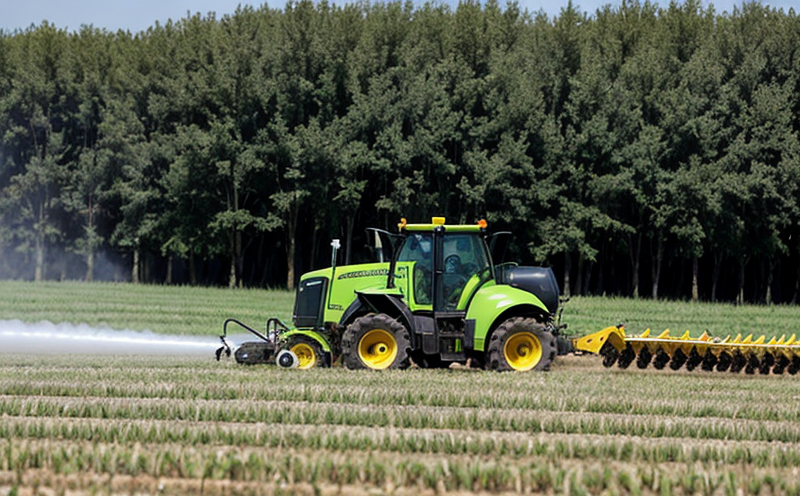Thiram Residue Testing in Crops
The use of fungicides like Thiram is widespread in agricultural practices to control fungal diseases and enhance crop yield. However, the presence of residues from these chemicals can pose significant risks if not managed properly. Regulatory bodies worldwide have established maximum residue limits (MRLs) for various crops to ensure food safety and protect human health.
Our specialized Thiram residue testing service ensures that farmers, processors, and manufacturers adhere to stringent regulatory standards. This involves a comprehensive approach from sample collection to final analysis, ensuring accurate results tailored to your specific crop needs.
The process begins with the selection of representative samples which are then prepared according to standardized procedures outlined in international guidelines such as ISO 18567:2015 and ASTM E1403-19. Once prepared, these samples undergo extraction using solvents followed by purification steps ensuring minimal interference from other components.
For accurate quantification, advanced instrumentation like Gas Chromatography-Mass Spectrometry (GC-MS) or Liquid Chromatography-Tandem Mass Spectrometry (LC-MS/MS) is employed. These techniques provide high sensitivity and specificity allowing precise determination of Thiram levels down to parts per billion (ppb).
Our team of experts uses state-of-the-art equipment calibrated regularly against certified reference materials ensuring reliability and reproducibility of results. Compliance with international standards guarantees that you receive reliable data which can be used confidently when making decisions about crop quality control.
The service also includes detailed reporting including raw data, calculated concentrations along with any relevant metadata such as harvest date or location. This information is crucial for tracking trends over time and identifying potential issues early on in the production cycle.
Scope and Methodology
| Sample Type | Preparation Steps | Extraction Technique | Purification Process | Detection Method | Report Content |
|---|---|---|---|---|---|
| Fruits, Vegetables, Grains | Cleaning, Cutting into Small Pieces | Solvent Extraction | Silica Gel Column Chromatography | GC-MS/LC-MS/MS | Data, Calculated Concentrations, Metadata |
| Potatoes, Tomatoes, Lettuce | Cleaning, Grinding | Aqueous Two-Phase Extraction | Silica Gel Column Chromatography | LC-MS/MS | Data, Calculated Concentrations, Metadata |
| Barley, Wheat, Oats | Cleaning, Grinding into Fine Powder | Solvent Extraction | Silica Gel Column Chromatography | GC-MS/LC-MS/MS | Data, Calculated Concentrations, Metadata |
The methodology ensures that all samples undergo identical processes from start to finish providing consistent and reliable results. Compliance with international standards further enhances the credibility of our findings.
Benefits
- Promotes food safety by ensuring compliance with regulatory limits.
- Reduces legal risks associated with non-compliance or accidental exceedance.
- Enhances reputation among consumers who value organic and safe products.
- Supports sustainable farming practices through informed decision-making processes.
- Aids in quality control throughout the supply chain from farm to table.
Use Cases and Application Examples
| Crop Type | Testing Frequency | Purpose of Testing |
|---|---|---|
| Fresh Fruits | Monthly during harvest season | To monitor compliance with MRLs before marketing. |
| Leafy Vegetables | Quarterly throughout the growing cycle | To detect early signs of contamination or improper application. |
| Cereal Grains | Sporadic as per regulatory requirements | To ensure adherence to international trade standards. |
Our service covers various crops including but not limited to apples, bananas, spinach, corn, rice, and many others. By implementing regular testing protocols, stakeholders can maintain high standards of quality control and build trust with end consumers.





